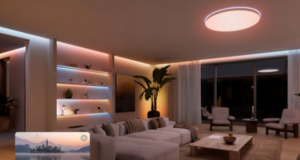
Having the best solar panels in the world won’t help if they’re not facing the right way at the right time. Find out the best direction and position in which to install solar panels in Australia.

Once you know how big your system needs to be, you need to decide where you’re going to put it and how best to position it to collect the maximum amount of sunlight. This may or may not be an easy decision, depending on your home’s situation, but there are some basic guidelines to follow to ensure you’re getting the best results.
Roof mounting, clear spaces, no shade
In most cases, the ideal position for a solar panel system is on the roof. There are a number of reasons for this; the roof is usually a wide-open space free of obstacles, the wiring and battery storage is easy to keep waterproofed if it is dropped beneath the panels, and the panels themselves are less likely to get damaged from incidental contact.
You may, however, decide to locate the panels on the ground for a number of other reasons – including lack of roof access, a requirement for remote power or for aesthetic reasons (particularly if you live in a nice vintage house). If you do go for a ground-mounted array, ensure that the panels have loads of clearance around them for maximum sun exposure and that they’re fenced off to protect them from damage or interference.
Orientation and tilting
Since most of the sun in the southern hemisphere comes at us from the north, the ideal orientation for solar panels in Australia is as close to true north as possible. Even small deviations from this direction can reduce a system’s efficiency by as much as 15%, so this is an important consideration.
Solar panels work best when the light hitting them comes in at a 90º angle, so the ideal tilt for Australian sun is at 32º. Variations in the tilt can make a big difference to efficiency (though not as marked as with orientation), so strive for somewhere between 20-40º. Anything more or less than this will reduce efficiency far too much.
Your roof may not be ideally positioned to accommodate these factors, but it is well worth investing in tilt frames and the like to ensure your panels are as close to these directions as possible. Solar panels really need to face in the right direction to be useful!
Nearby shade
Shading from obstacles like trees or nearby buildings can seriously reduce the number of hours your panels are exposed to direct sunlight, and thereby reducing collection time and efficiency. To get the most out of your solar panels it’s important to clear as much space around them as possible, or locate them in an area which will see maximum sunlight. Trees in particular need to be trimmed well clear of panels to avoid the build-up of leaf litter on the surface of the panels which can block sunlight from getting through.





